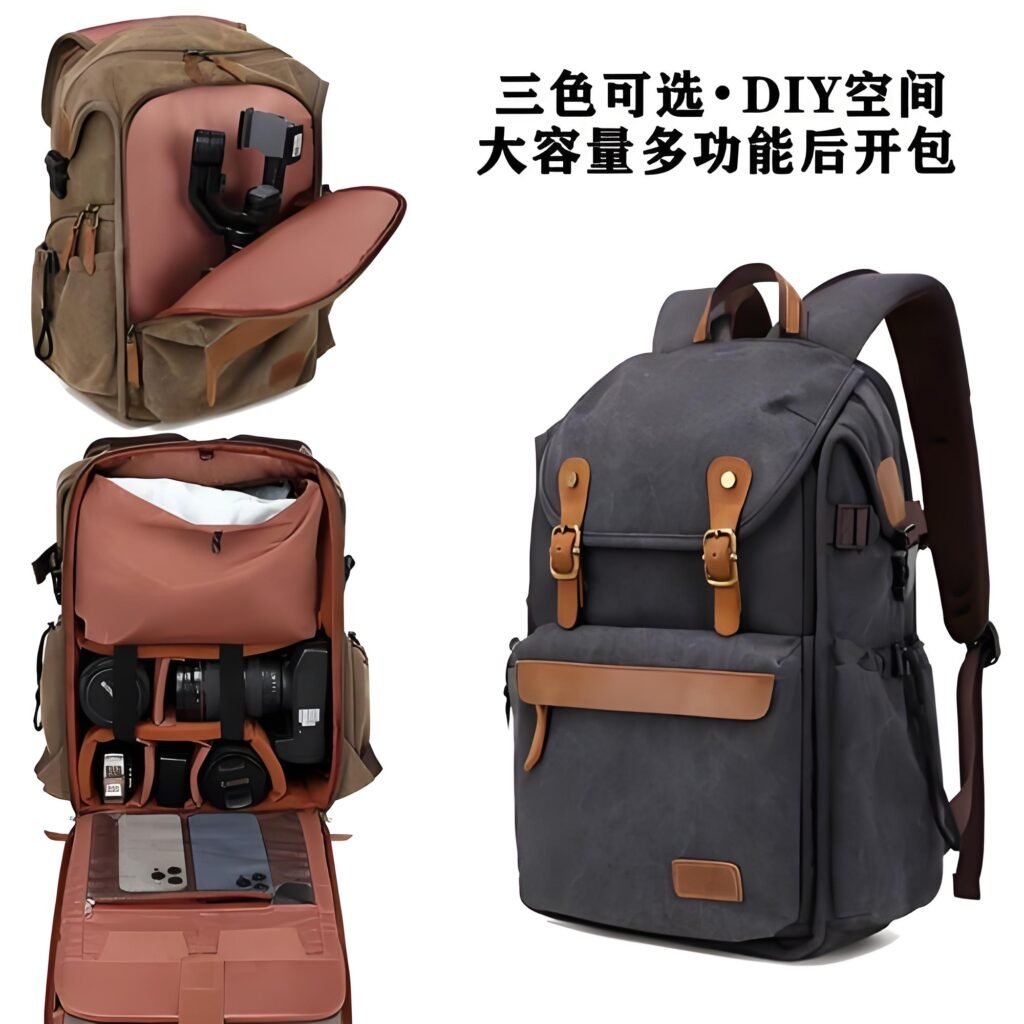The Art and Craft of Sewing PVC Patches onto Camera Bags: A Comprehensive Guide
Introduction
In the world of photography, camera bags are more than just functional accessories; they are an extension of the photographer’s personality and style. Customizing these bags with PVC patches has become a popular trend among photography enthusiasts. These patches not only add a unique touch to the bag but also serve as a form of self-expression. This article delves into the intricate process of sewing PVC patches onto camera bags, exploring the materials, techniques, and creative possibilities involved.

Understanding PVC Patches
What are PVC Patches?
PVC (Polyvinyl Chloride) patches are durable, flexible, and waterproof emblems made from a type of plastic. They are known for their vibrant colors, intricate designs, and resistance to wear and tear. Unlike traditional embroidered patches, PVC patches are three-dimensional and have a rubber-like texture, making them stand out on any surface they are applied to.
Why Choose PVC Patches for Camera Bags?
- Durability: PVC patches are highly resistant to water, UV rays, and abrasion, making them ideal for camera bags that are often exposed to various environmental conditions.
- Customization: They offer a wide range of design possibilities, allowing photographers to personalize their bags with logos, symbols, or artwork that reflect their style.
- Visibility: The three-dimensional nature of PVC patches makes them more noticeable, adding a distinctive flair to the camera bag.
Materials and Tools Needed
Before embarking on the sewing process, it’s essential to gather all the necessary materials and tools. Here’s a comprehensive list:
- PVC Patches: Choose patches that resonate with your style and the size of your camera bag.
- Camera Bag: Ensure the bag is clean and free from any debris that might interfere with the sewing process.
- Needle: A heavy-duty needle is recommended, especially for thicker patches or bags made from tough materials.
- Thread: Use a strong, durable thread that matches the color of the patch or the bag. Polyester or nylon threads are ideal for their strength and resistance to wear.
- Thimble: This tool protects your fingers when pushing the needle through thick materials.
- Scissors: Sharp scissors are necessary for cutting the thread and trimming any excess material.
- Pins or Fabric Glue: These can be used to temporarily hold the patch in place before sewing.
- Measuring Tape or Ruler: To ensure the patch is positioned correctly and symmetrically.
- Marking Tool: A fabric marker or chalk can be used to mark the placement of the patch on the bag.
Preparing the Camera Bag
Cleaning the Bag
Before attaching any patches, it’s crucial to clean the camera bag thoroughly. Dirt, dust, or oils can interfere with the adhesion of the patch or the sewing process. Use a mild detergent and a damp cloth to wipe down the bag, paying special attention to the areas where the patches will be placed. Allow the bag to dry completely before proceeding.
Choosing the Placement
The placement of the PVC patch is a critical step in the customization process. Consider the following factors:
- Visibility: Choose a spot that is easily visible, such as the front flap or the side of the bag.
- Functionality: Ensure that the patch does not interfere with the bag’s functionality, such as zippers, straps, or compartments.
- Aesthetics: Think about the overall design and how the patch will complement the bag’s existing features.
Use a measuring tape or ruler to mark the exact position of the patch. If you’re attaching multiple patches, ensure they are evenly spaced and aligned.
Attaching the Patch
Temporary Fixation
Before sewing, it’s helpful to temporarily fix the patch in place. This can be done using pins or fabric glue. If using pins, insert them around the edges of the patch, ensuring they are secure but not too tight. If using fabric glue, apply a small amount to the back of the patch and press it firmly onto the bag. Allow the glue to dry for a few minutes before proceeding.
Sewing the Patch
- Threading the Needle: Cut a length of thread (approximately 18-24 inches) and thread it through the needle. Tie a knot at the end of the thread.
- Starting the Stitch: Begin sewing from the inside of the bag to hide the knot. Bring the needle up through the bag and the edge of the patch.
- Stitching Technique: Use a simple running stitch or a more secure backstitch. For a running stitch, pass the needle in and out of the bag and patch in a straight line. For a backstitch, bring the needle up through the bag and patch, then insert it back a short distance behind the first stitch, creating a continuous line.
- Securing the Patch: Continue stitching around the entire perimeter of the patch, ensuring the stitches are evenly spaced and tight. For added durability, you can sew around the patch twice.
- Finishing the Stitch: Once you’ve completed the stitching, tie off the thread on the inside of the bag. Make a small knot and trim any excess thread.
Tips for a Professional Finish
- Consistent Stitch Length: Maintain a consistent stitch length for a neat and professional appearance.
- Tight Stitches: Ensure the stitches are tight enough to hold the patch securely but not so tight that they distort the patch or the bag.
- Hidden Knots: Always start and finish the stitching on the inside of the bag to hide the knots.
- Reinforcement: For larger patches or bags made from heavy-duty materials, consider reinforcing the stitches by sewing around the patch multiple times.
Creative Possibilities
Mixing and Matching Patches
One of the joys of customizing camera bags with PVC patches is the ability to mix and match different designs. You can create a cohesive theme by selecting patches that share a common color scheme or subject matter. Alternatively, you can opt for an eclectic look by combining patches with contrasting designs and colors.
Layering Patches
For a more dynamic and textured look, consider layering patches. This involves placing smaller patches on top of larger ones, creating a sense of depth and dimension. Be mindful of the placement and ensure that the layered patches do not interfere with the bag’s functionality.
Incorporating Other Embellishments
In addition to PVC patches, you can further personalize your camera bag by incorporating other embellishments such as embroidery, fabric paint, or even additional hardware like studs or rivets. These elements can enhance the overall design and make your bag truly one-of-a-kind.
Maintenance and Care
Cleaning the Patched Bag
To maintain the appearance and longevity of your customized camera bag, it’s important to clean it regularly. Use a damp cloth to wipe down the bag, avoiding harsh chemicals that could damage the patches or the bag’s material. For stubborn stains, use a mild detergent and gently scrub the affected area.
Inspecting the Stitches
Over time, the stitches securing the patches may loosen or wear out. Periodically inspect the stitches and reinforce them if necessary. This will ensure that the patches remain securely attached and continue to enhance the bag’s appearance.
Storing the Bag
When not in use, store your camera bag in a cool, dry place away from direct sunlight. Prolonged exposure to sunlight can cause the colors of the patches to fade. Additionally, avoid placing heavy objects on top of the bag, as this could distort the patches or the bag’s shape.
Conclusion
Sewing PVC patches onto a camera bag is a rewarding and creative process that allows photographers to express their individuality and style. By following the steps outlined in this guide, you can achieve a professional-looking customization that enhances both the aesthetics and functionality of your camera bag. Whether you’re a seasoned photographer or a hobbyist, the addition of PVC patches can transform your camera bag into a unique and personalized accessory that stands out in any setting. So, gather your materials, unleash your creativity, and start sewing your way to a one-of-a-kind camera bag that reflects your passion for photography.


